How To Teach A Kid To Increase Baseball Or Softball Hitting Power & Bat Speed With LESS Hip Rotation Batting Drills
Discover how to teach a kid to increase baseball or softball (fast-pitch and slow-pitch) hitting power and bat speed with LESS hip rotation batting drills. PLEASE NOTE: power isn’t ALL in the hips as some may say. After exploring this post, you’ll see why we feel ‘load and explode the hips’ or ‘fire the hips’ cues are overplayed, doing more harm than good.
“What Baseball Batting Drills Work To Stop Dipping Back Shoulder?”

Fascia is like a cotton candy or spider webby like material that our bones and muscles float in. Photo courtesy: Thomas Myers in his book Anatomy Trains
PLEASE NOTE: this baseball batting drills post presupposes the hitter is getting an extreme barrel vertical angle at impact. In other words, they’re intersecting the pitch plane from down to up. Dipping the back shoulder is inevitable…this blog post goes into fixing extreme uppercut cases.
In this baseball batting drills video, we answer the reader question above. We go over:
- Springy fascia & tracking the front shoulder,
- Mechanical dominoes that cause upper cutting, and
- A couple fixes…
Springy Fascia & Tracking the Front Shoulder
Here are other Hitting Performance Lab baseball batting drills posts on springy fascia and the spinal engine – and tracking of the front shoulder:
- How to Turn a Beach Towel into a Hitting Demonstration
- Is Rotating the Back Hip Through the Zone Necessary for Power?
- 4 Tips on How to Train Springy Fascia
- Jose Abreu Power Secret Found in an Unlikely Place
- Matt Kemp Video: Unique Ted Williams Power Secret
Mechanical Dominoes that Cause Upper Cutting
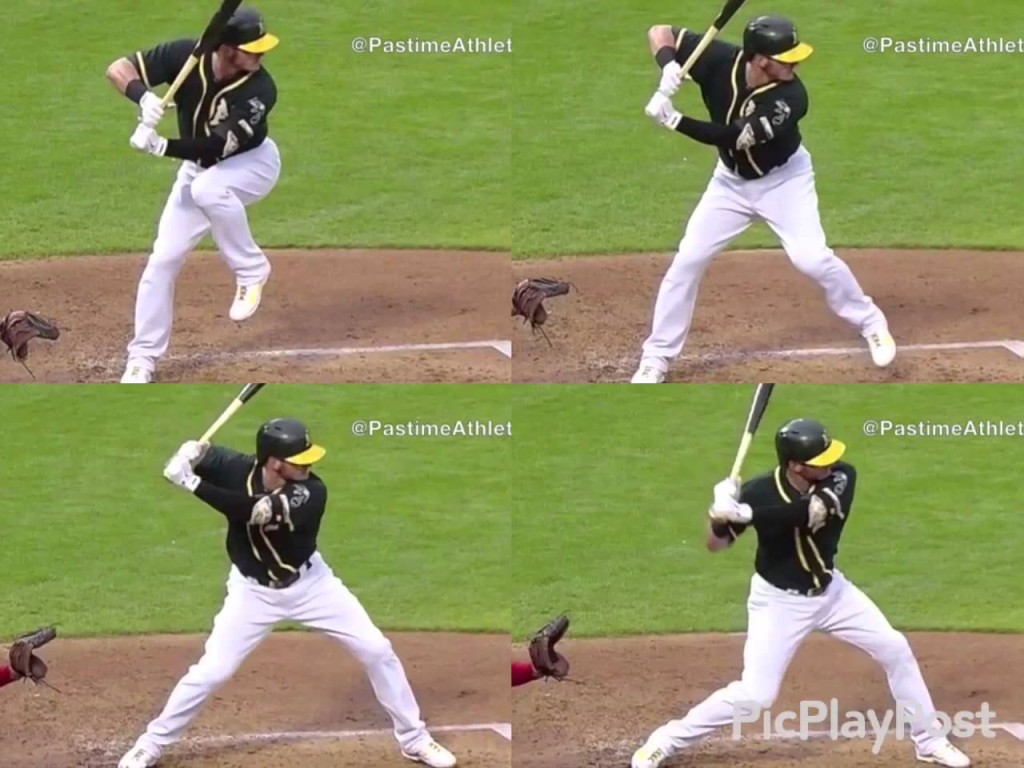
Watch Josh Donaldson drop hands, then bring back up. Also, notice downhill shoulder angle, and him leading with back armpit in the last frame. Photo courtesy: YouTube users PicPlayHost & PastimeAthletics
Here is a baseball batting drills list of faults I find that CAN contribute to upper cutting:
- Poor barrel launch angle,
- Hands drop,
- Upward shoulder angle at landing,
- Racing back elbow,
- Steep front upper arm at landing, and
- Too much downhill shoulder angle…
#1 would be a hitter having a flat bat, or close to flat, at stride landing. This shifts the bat’s center of mass behind the hitter (instead of above).
#2 can exist on any pitch height or just pitches down in the zone. The hands don’t travel down, then forward. They travel down AND forward. Think of hand path like a right triangle – we want hypotenuse. The higher the pitch, the flatter the hypotenuse. The lower the pitch, the steeper the hypotenuse.
An upward shoulder angle at landing, #3, will most likely result in uppercutting and/or a collapsing of the backside.
#4, racing back elbow causes the barrel to get really steep early in the hitting zone, which leads to a lot of weak fly balls to the opposite field. AND, because of the steep vertical angle of the barrel, a significant roll over correction will happen later in the barrel’s path, resulting in grounders to the hitter’s pull side.
About #5, if the front elbow gets caught ‘tucked in’ at landing (elbow pointing down at the ground), then an uppercut will most likely happen. And this ‘tucking’ will happen most likely because of #6, too steep of a shoulder angle.
Baseball Batting Drills Fix…
- High tee inside setup using end loaded overload bat,
- Flashlight barrel angle drill,
- Hands Drop Drill,
- Finger pressure (bottom three fingers of the top hand only), and
- Swinging down in the ‘launch angle’ era.
- Fix Your Child’s Fear of the Ball Fast: Proven Hitting Drills to Stop Flinching at Pitches—Trusted by Top Youth Baseball Coaches - July 12, 2025
- Fix Your Little Leaguer’s Hitting Slump Fast – Proven Confidence Drills & Mental Reset Tools (Used by Top Youth Baseball Coaches) - July 9, 2025
- Best Hitting Drills for 8-Year-Olds (2025): Fix Swing Flaws Fast with This MLB-Trusted Youth Baseball System—At-Home, Step-by-Step, and Built for Game-Day Confidence - July 5, 2025

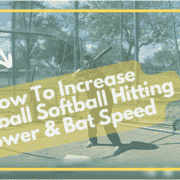

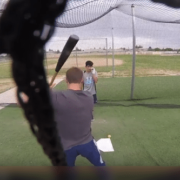

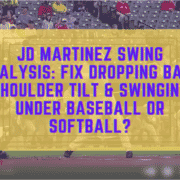
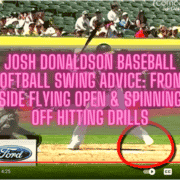






My 13 y/o who usually murders the ball starts popping up, flailing at the ball, etc. I watched this video and BOOM realized his bat is flat and he is arm baring. I showed him the video and BOOM 2 for 2 with 2 rocket line drives. Thanks Joey!